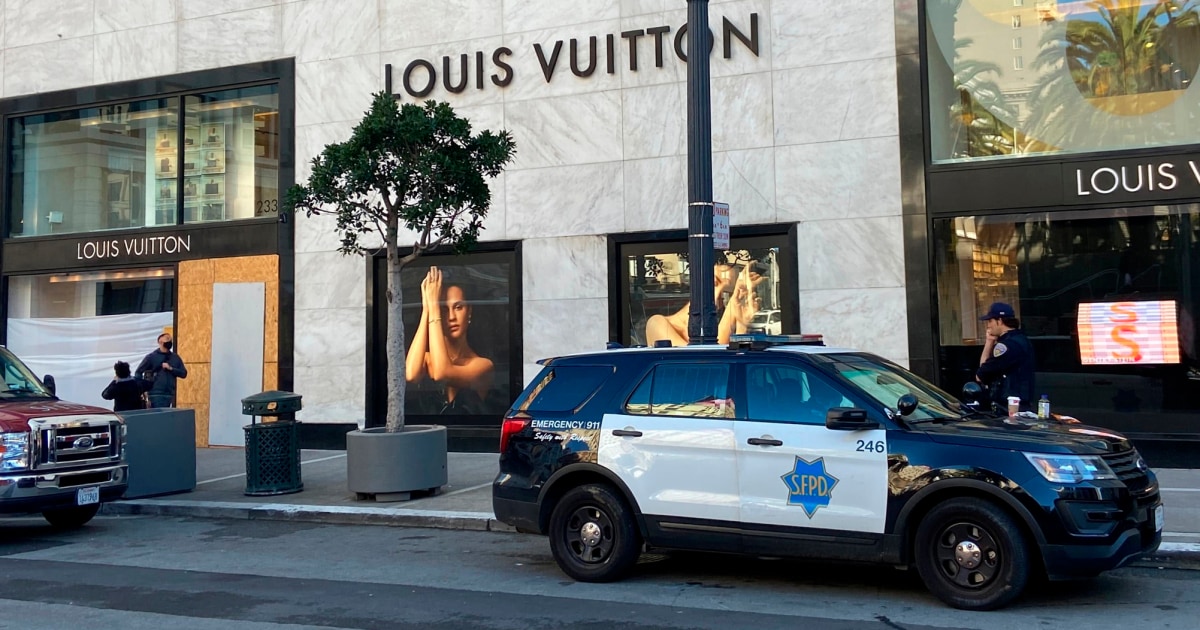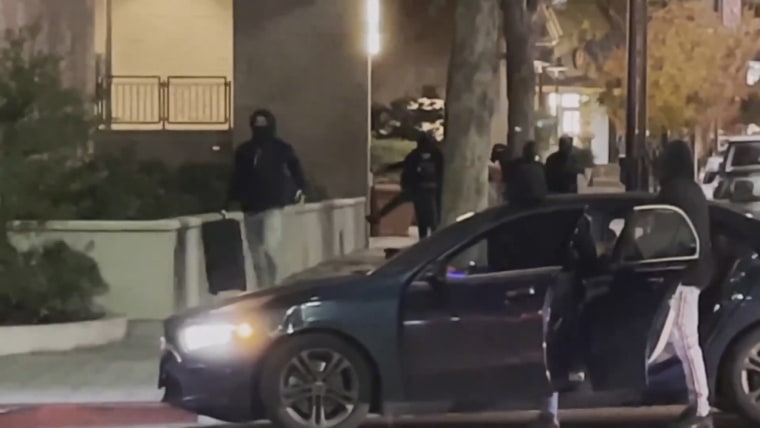Best Buy shoppers can expect to find more high-value merchandise behind locked shelves and a larger security presence in certain stores.
Along Rodeo Drive in Beverly Hills, California, a pair of private security companies are patrolling the ritzy shopping district in response to attempted smash-and-grab robberies at Louis Vuitton and Saks Fifth Avenue stores last weekend.
Meanwhile, in San Francisco’s Union Square, following a spate of thefts and vandalism Friday night at nearly a dozen stores, including Louis Vuitton, Burberry and Bloomingdale’s, city officials announced traffic patterns near high-end retailers had been readjusted so that thieves can’t easily park, commit a robbery and then speed off.
“We will do what we need to do to put an end to this madness,” San Francisco Police Chief William Scott told reporters.
A lingering fear of coordinated large-scale robberies is rattling retailers, not only in cities like San Francisco, Los Angeles and Chicago, where videos of such thefts have gone viral, but in affluent suburbs not normally targeted involving tens of thousands of dollars worth of products.
Businesses, shopping malls and law enforcement agencies are weighing which protective measures to take as customers begin packing stores during the busiest shopping days ahead, including Black Friday, and in the midst of an economic backdrop of higher prices and shipping delays. A recent survey by the research firm The NPD Group found that online sales are settling back to pre-pandemic levels and brick-and-mortar stores are regaining their share of the retail sales market as shoppers yearn to return to the in-person experience.
But the threat of smash-and-grab incidents at already bustling stores can be “a dangerous rodeo,” said Read Hayes, a criminologist at the University of Florida and director of the Loss Prevention Research Council, a retail industry trade group.
Last Saturday, about 80 people ransacked a Nordstrom store in the San Francisco suburb of Walnut Creek and drove off with merchandise in an audacious flash-mob-style frenzy. Five employees suffered minor injuries, and three people were arrested shortly afterward, police said.
Walnut Creek officials have ramped up the town’s police presence and closed down a street to cars to deter copycats.
“If it means that we are going to detour roads, if it means we’re going to have more police on the street and more security around, whatever it is, every option is on the table,” Walnut Creek Mayor Kevin Wilk told NBC Bay Area.
He also told NBC News that investigators are looking at how social media appears to have been used to orchestrate organized retail robbery.
In San Francisco, officials have vowed to go after those responsible. District Attorney Chesa Boudin announced nine people were arrested on Tuesday in connection with the Union Square thefts and other cases, charging the suspects with burglary, grand theft, receiving stolen property and looting.
Three people were also arrested early Tuesday after a large group attempted to break into a Nordstrom at The Grove mall in Los Angeles after hours. A sledgehammer was found at the scene.
Nordstrom said as a result of the incidents in Los Angeles and Walnut Creek, it is “positioning security personnel inside and outside of our stores and working closely with mall security and law enforcement to anticipate and minimize risk.”
There will also be more response training for employees and the retailer, which has 100 full-service stores across the country, said it is “heightening our in-store security presence and implementing additional protective measures to keep everyone safe.”
California Gov. Gavin Newsom announced this week that he would direct “substantially more” law enforcement officers in highly trafficked retail corridors, and the California Highway Patrol’s Organized Retail Crime Task Force said it was increasing its presence near freeways adjacent to major shopping centers.
In August, Newsom, a Democrat, signed a law that funds the task force through the end of 2025, focusing on “ringleaders and conspirators of these criminal networks and not the low-level petty thief.” He said he plans to propose more funding in next fiscal year’s budget toward combating organized retail thefts statewide.
Newsom, who owns a hospitality company that includes wine shops and restaurants, said he knows first-hand how destructive criminal acts can be after his business was broken into three times this year.
“I have no sympathy, no empathy whatsoever for people smashing and grabbing, stealing people’s items, creating havoc and terror on our streets,” Newsom told reporters. “We want real accountability, we want people prosecuted and we want people to feel safe this holiday season.”
To ward off criminals, Hayes said it may take an array of tools at retailers’ disposal. Not just increasing security presence, he added, but using technology that can make a stolen item ineffective unless it’s activated when purchased, locking or tying up merchandise, positioning products in strategic locations that make them harder to run away with and also training employees to be more vigilant while also engaging in customer service.
“There’s long been a flash rob/flash mob effort,” Hayes said, “but this is the boldest I’ve ever seen it.”
Authorities and retail experts say these more aggressive actions may be the result, in part, of retailers also taking tougher stances on criminal activity like shoplifting. There’s also money to be made by these organized retail rings which can amass millions of dollars worth of products and sell them online or in other countries with the earnings laundered back to the United States.
The Coalition of Law Enforcement and Retail, a trade association, estimates organized retail crime leads to about $45 billion in losses for retailers each year, with more then $500 billion in illicit stolen and counterfeit goods getting sold on third-party platforms like Amazon.
“Back when they hit me, they could sell at flea markets and to friends, but now, it’s easier,” said Georganne Bender, a retail consultant in Illinois who managed a ladies’ boutique in the 1980s along the Magnificent Mile commercial district in Chicago. “There’s eBay and Poshmark and a gazillion other places.”
Bender said smaller retailers may have to consider solutions like locking doors and only allowing a limited number of guests in at a time or requiring appointments, but those options aren’t shopper friendly and “one way or another a mob intent on entering the store is going to get in.”
Best Buy CEO Corie Barry, who on an earnings call this week lamented the string of high-profile robbery incidents across the retail industry, said Tuesday on CNBC that she unsure’s what’s driving the crimes, but they remain hard to stop.
“We are finding ways where we can lock up product but still make that a good customer experience,” Barry said in the earnings call. “In some instances, we’re hiring security. We’re working with our vendors on creative ways we can stage the product.”
As retailers decry the thefts, the wave of incidents has been highlighted by industry groups to call for the strengthening of laws, which they say have been loosened to the detriment of businesses as some cities and states move toward decriminalizing certain low-level offenses.
In California, property and violent crime rates have actually fallen in recent years to historic lows. And experts say it remains to be seen what kind of long-term effect factors such as the pandemic and friction between communities and the police will have on organized retail theft and how widespread it may become.
Bender, the retail consultant, said stores are just busy concentrating on what’s coming: a major shopping weekend.
“There’s already a lot of landmines for retailers, between how to prevent shoplifters to can we get enough merchandise,” she said.
“This is a huge weekend for these stores who want people to come in and be comfortable and happy,” she added, “not thinking in the back of their minds are they going to be hit by a mob of thieves.”






